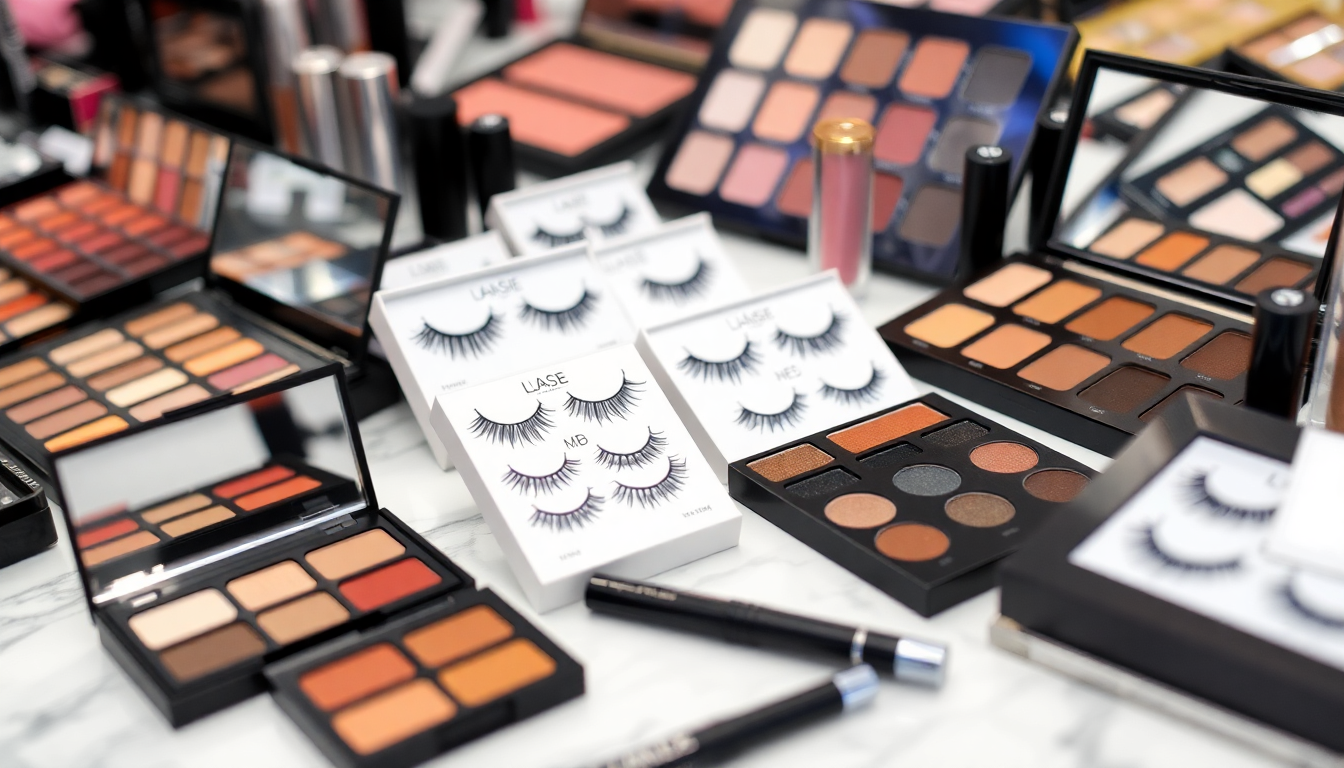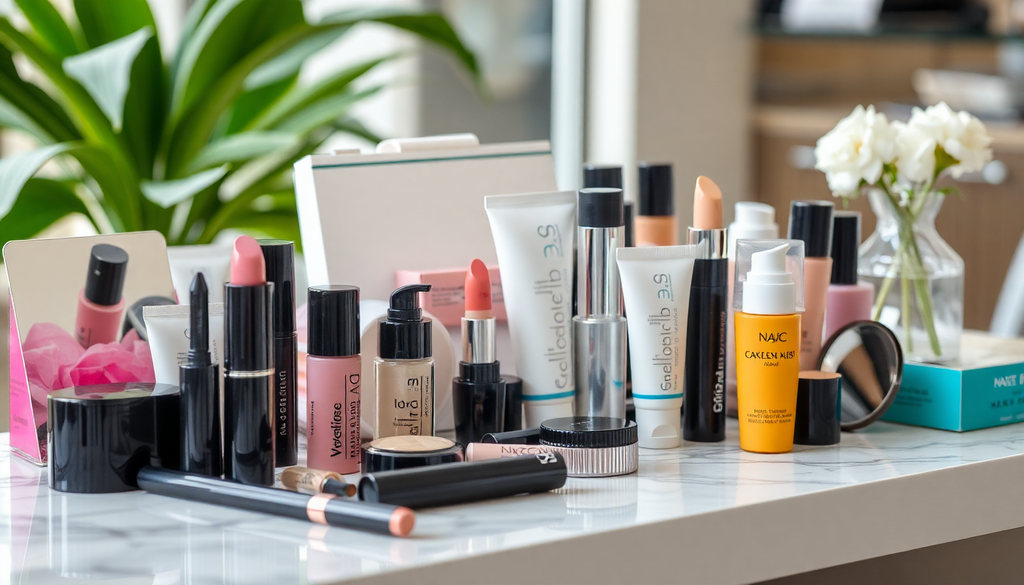
A Comprehensive Guide to Launching Your Private Label Makeup Brand: From Magnetic Lashes to Custom Eyeshadow Palettes Without Minimum Orders
Introduction
Starting your own private label makeup brand can be a rewarding venture, especially with the rise of beauty enthusiasts seeking unique products. This guide will walk you through the essential steps to launch your brand, focusing on magnetic lashes and custom eyeshadow palettes, while addressing critical aspects like cosmetics labeling, import policies, and how to set up your online store.
Understanding Private Label Makeup
Private labeling involves creating products that are manufactured by one company and sold under another company's brand. This allows you to build your brand without the overhead of manufacturing. Here are the key aspects:
- Quality Control: Work with reputable manufacturers to ensure high-quality products.
- Branding: Focus on creating a strong brand identity that resonates with your target market.
- Customization: Offer unique features such as custom formulations or packaging.
Choosing the Right Products
When starting your brand, products like magnetic lashes and custom eyeshadow palettes are popular choices. Here’s how to select the right products:
- Market Research: Identify trends and gaps in the market. Use tools like Google Trends and social media analytics to gauge what consumers are interested in.
- Product Quality: Ensure the products you choose meet safety standards and customer expectations. Request samples from suppliers to assess the quality firsthand.
- Supplier Relationships: Build strong relationships with suppliers who can accommodate your needs without minimum orders. Consider sourcing from local manufacturers to reduce shipping costs and minimize environmental impact.
Identifying Your Target Audience
Understanding your target audience is crucial for the success of your brand. Here are some strategies to pinpoint who your customers are:
- Demographic Analysis: Identify the age, gender, income level, and geographic location of your potential customers.
- Psychographic Profiling: Understand their interests, values, lifestyle, and beauty preferences. This can help tailor your marketing messages.
- Competitor Analysis: Study your competitors to understand their target audience and find ways to differentiate your brand.
Cosmetics Labeling Requirements
Every country has specific regulations regarding cosmetics labeling. Here’s what to consider:
- Ingredient Listing: All ingredients must be listed in descending order of predominance. Familiarize yourself with the INCI (International Nomenclature of Cosmetic Ingredients) system.
- Allergen Information: Highlight any potential allergens clearly. Regulations may require listing common allergens.
- Country-Specific Regulations: Research the specific labeling laws in your target market, such as the EU’s Cosmetic Regulation or FDA guidelines in the USA. Compliance is essential to avoid legal issues.
- Language Requirements: Ensure labels are in the appropriate languages for the countries where you plan to sell your products.
Import Policies and Certifications
Understanding import policies is crucial when sourcing products internationally:
- Import Tariffs: Research any tariffs that may apply to cosmetics imported into your country. This can affect your pricing strategy.
- Certificates: Obtain necessary certifications such as GMP (Good Manufacturing Practices) to ensure product safety. Depending on your market, you might also need cruelty-free or vegan certifications.
- Documentation: Prepare all required documentation for customs clearance. This includes commercial invoices, packing lists, and any necessary import permits.
- Customs Broker: Consider hiring a customs broker to navigate complex import regulations and ensure compliance.
Setting Up Your Online Store
Establishing an online presence is vital for your makeup brand:
- Choose a Platform: Consider platforms like Shopify, WooCommerce, or Wix that support e-commerce. Choose a platform that fits your technical skills and business needs.
- Design Your Store: Create an appealing and user-friendly website that reflects your brand identity. Utilize high-quality images and concise product descriptions.
- SEO Optimization: Implement SEO strategies to increase your store's visibility in search engine results. Use relevant keywords in your product descriptions, titles, and blog content.
- Payment Processing: Set up secure payment gateways to facilitate customer transactions. Consider offering multiple payment options to cater to diverse customers.
- Customer Support: Establish clear channels for customer support, such as live chat or email, to assist customers with inquiries and issues.
Marketing Your Makeup Brand
Effective marketing strategies will help promote your brand:
- Social Media Marketing: Utilize platforms like Instagram and TikTok to showcase your products and engage with customers. Post tutorials, behind-the-scenes content, and user-generated content to build a community.
- Influencer Collaborations: Partner with beauty influencers to reach a wider audience. Choose influencers whose values align with your brand for authentic partnerships.
- Email Marketing: Build a mailing list to keep customers informed about new products and promotions. Consider offering a discount or freebie for signing up to encourage subscriptions.
- Content Marketing: Create valuable content such as beauty tips, tutorials, and product guides. This not only engages your audience but also establishes your brand as an authority in the beauty industry.
- Paid Advertising: Consider investing in paid advertising campaigns on platforms like Facebook, Instagram, and Google Ads to boost visibility and drive traffic to your online store.
Building a Brand Identity
Your brand identity is crucial in the competitive makeup industry. Here are some components to consider:
- Logo Design: Create a memorable logo that reflects your brand’s ethos and values. A professional logo can enhance brand recognition.
- Brand Voice: Develop a consistent brand voice across all marketing channels. Whether playful, informative, or luxurious, your voice should resonate with your target audience.
- Packaging Design: Invest in attractive, functional packaging that stands out on shelves and online. Eco-friendly packaging can also appeal to environmentally conscious consumers.
Legal Considerations
Before launching your brand, it’s important to address legal considerations:
- Business Structure: Decide on a business structure (sole proprietorship, LLC, etc.) and register your business accordingly.
- Trademark Protection: Consider trademarking your brand name and logo to protect your intellectual property.
- Insurance: Look into product liability insurance to protect your business from potential claims.
Conclusion
Launching a private label makeup brand can be an exciting journey filled with opportunities. By following this comprehensive guide, you can navigate the complexities of the beauty industry and create a successful brand that stands out in a competitive market. Remember to focus on quality, compliance, and effective marketing to ensure your brand's success. With dedication and strategic planning, you can transform your vision into a thriving makeup brand that resonates with beauty enthusiasts around the world.


